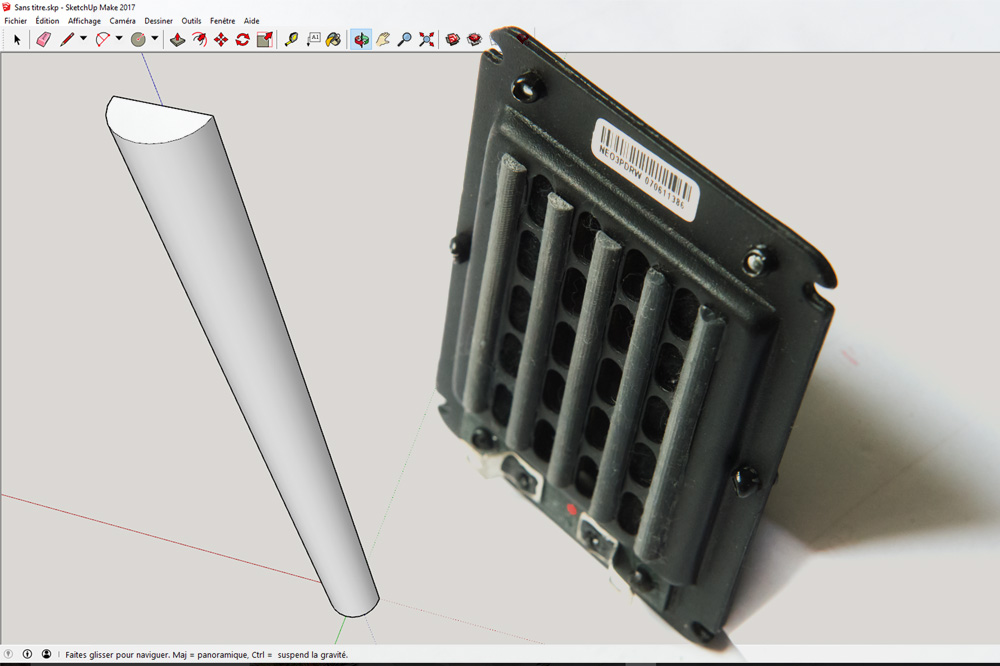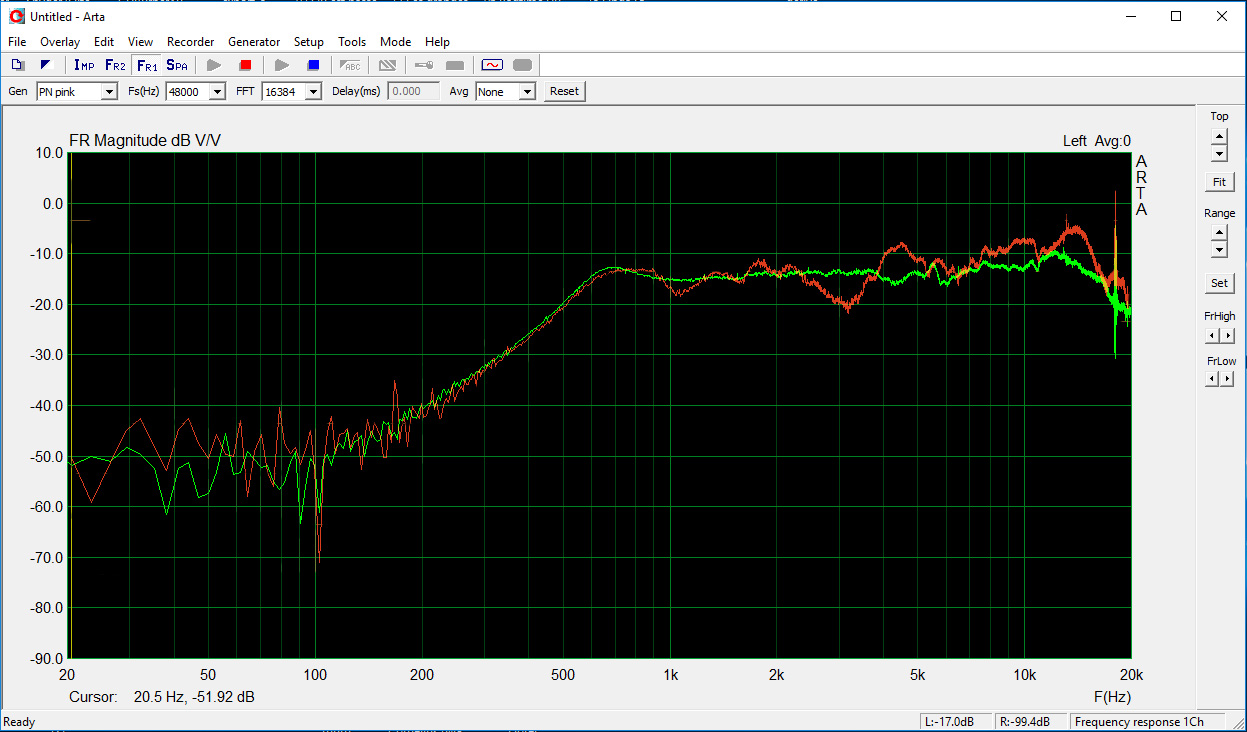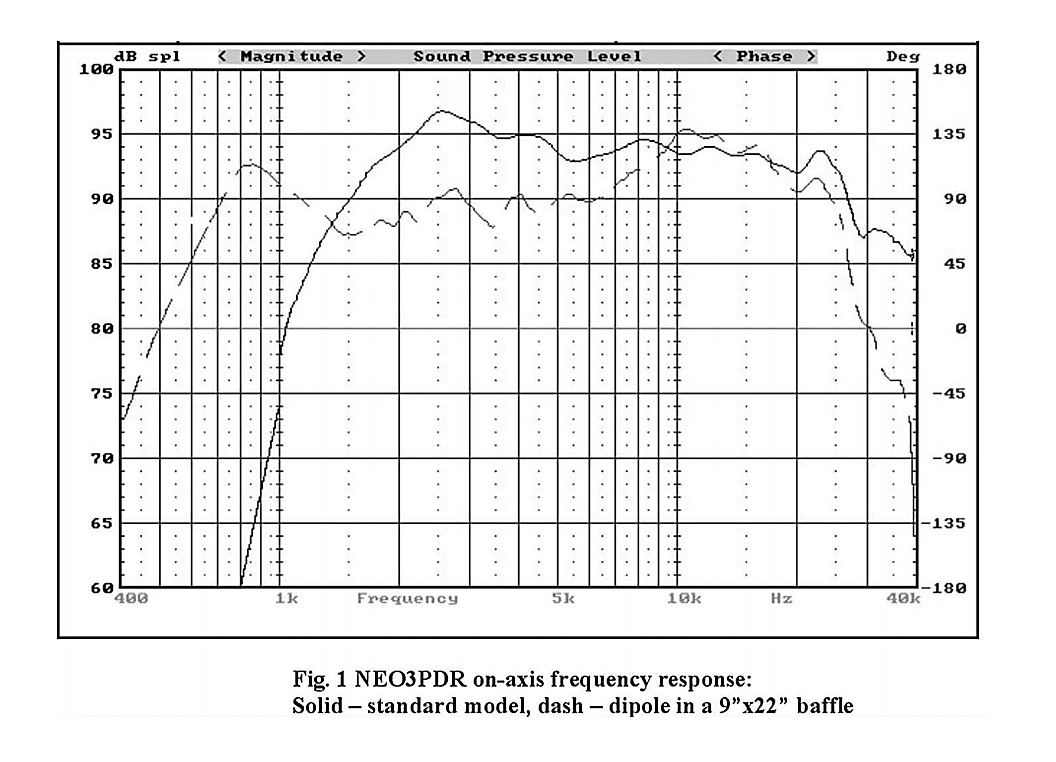I always found that NEO 3 pdr is a nearly perfect tweeter excepted the frequency response.
When I studied the construction, I found that this tweeter sufering of difraction because of the magnets in front of the diaphragm.
So I've design some flexible resin shape to bond on the tweeter surface (on both side).
This shape cancel the diffraction effect of the tweeter housing
It's 3D printing with formlabs flexible resin:

It's far more effective than I though, nearly perfect response (green curve after modification, red before modification)

I will give up the waveguide! :green:
When I studied the construction, I found that this tweeter sufering of difraction because of the magnets in front of the diaphragm.
So I've design some flexible resin shape to bond on the tweeter surface (on both side).
This shape cancel the diffraction effect of the tweeter housing
It's 3D printing with formlabs flexible resin:
It's far more effective than I though, nearly perfect response (green curve after modification, red before modification)
I will give up the waveguide! :green:
Attachments
wow
I wonder if any further improvement if those bars were "bullet" shaped ?
I wouldnt be suprised if your mod with a small rounded wave guide would smooth the sharp roll off at the top end a bit. However what you got looks so effective you are likely at the point of diminished return
I wonder if any further improvement if those bars were "bullet" shaped ?
I wouldnt be suprised if your mod with a small rounded wave guide would smooth the sharp roll off at the top end a bit. However what you got looks so effective you are likely at the point of diminished return
Last edited:
Excellent result!
Did you measure the off-axis response? Given this result it makes sense to do a set of measurements for a directivity plot. I would also be interested in the cumulative spectral decay. To round it off you could measure the harmonic distortion, just to be sure that there isn't a trade off somewhere.
regards,
Gerrit
Did you measure the off-axis response? Given this result it makes sense to do a set of measurements for a directivity plot. I would also be interested in the cumulative spectral decay. To round it off you could measure the harmonic distortion, just to be sure that there isn't a trade off somewhere.
regards,
Gerrit
Ive been doing a ton of testing recently on slot shapes for tru ribbons. I see very similar FR shaping results as altoluma is getting here and have only seen improvments on off axis as well with no big changes in waterfall and distortion.
Basically sharp changes in geometry make wiggles. Nothing new there but that respose altoluma is getting from simple half round bars is as mentioned better than expected. Gota love that.
I suspect if you flush mount that neo3 so that tops of half rounds are flush with baffle it would be even better.
Basically sharp changes in geometry make wiggles. Nothing new there but that respose altoluma is getting from simple half round bars is as mentioned better than expected. Gota love that.
I suspect if you flush mount that neo3 so that tops of half rounds are flush with baffle it would be even better.
I've seen some (and I've made some myself) Neo3PDR measurements and they look much better than your red curve.
Here's one example from John Krutke a few years ago. Very flat through the 3-5khz range where your measurement shows a huge 13db variation.
Zaph|Audio
There's something else going on here. 🙂
Dave.
Here's one example from John Krutke a few years ago. Very flat through the 3-5khz range where your measurement shows a huge 13db variation.
Zaph|Audio
There's something else going on here. 🙂
Dave.
This is the curve with the back cup in place . You can see it by the 1,5kz cut off.
The back cup give a better FR
here the two curve (within/without) from the neo3 datasheet:

The back cup give a better FR
here the two curve (within/without) from the neo3 datasheet:
Attachments
Last edited:
I'm not talking about back cup issues. 🙂 I'm well aware of those.
The back cup was in place for both of your modification before/after measurements above, yes???
I think as Gerritt mentioned, you need to make some off-axis measurements as well.
Dave.
The back cup was in place for both of your modification before/after measurements above, yes???
I think as Gerritt mentioned, you need to make some off-axis measurements as well.
Dave.
Hmm good points
altoluma, from your measurments it looks as if the back cup was removed?
also could you describe the baffle the Neo 3 was mounted to in your measurements?
altoluma, from your measurments it looks as if the back cup was removed?
also could you describe the baffle the Neo 3 was mounted to in your measurements?
Last edited:
The back cup was in place for both of your modification before/after measurements above, yes???
no back up, free air!
no back up, free air!
Ok that likley explains the 2-5 khz wiggle
Interesting how the half round rods can smooth this AND I suspect from my own experaments that you DONT have the half rounds on the back side only on one side?
As written, On both side!
Ok interesting not what I thought.
How about the baffle ? what are you using?
no back up, free air!
Okay, thanks for the clarification.
On my Neo3's, removing the back cup caused a severely under-damped response. I think because of your microphone distance you're probably not seeing it illustrated.
I'm not a fan of removing the back cup on those tweeters. They already have a significant resonant behavior and removing the back cup only accentuates the situation. Plus, distortion increases as well.
I consider the Neo3PDR a supertweeter only.
Nice experiment though.
Cheers,
Dave.
I could be wrong, but looking at the measurement in the first post, I'd wager they were near field measurements with the mike quite close to the driver.How about the baffle ? what are you using?
A bit of deja vu here, as just last week I stumbled on the Audeze patent for what they call "fazor-elements" used in there planar headphones.
FAZOR ELEMENTS | Audeze
Attachments
cool! 😀 It strengthens me in the idea that it is not really such a bad thing! 😛
maybe i will try their "bullet" shape?
maybe i will try their "bullet" shape?
I'm not a fan of removing the back cup on those tweeters. They already have a significant resonant behavior and removing the back cup only accentuates the situation. Plus, distortion increases as well.
Dave i'm very suprised about your distortion claim. I found the opposite and Troels too:
WITH BACK cup

WITHOUT

futhermore , remove the back cup lower the resonance frequency so I found it usufull to use this tweeter from 2khz. but maybe we don't talk about the same thing?
Last edited:
Dave i'm very suprised about your distortion claim. I found the opposite and Troels too:
WITH BACK cup

WITHOUT

futhermore , remove the back cup lower the resonance frequency so I found it usufull to use this tweeter from 2khz. but maybe we don't talk about the same thing?
Question, how far is mic from the driver in these distortion measurments?
- Home
- Loudspeakers
- Planars & Exotics
- BG NEO 3 FR optimization



